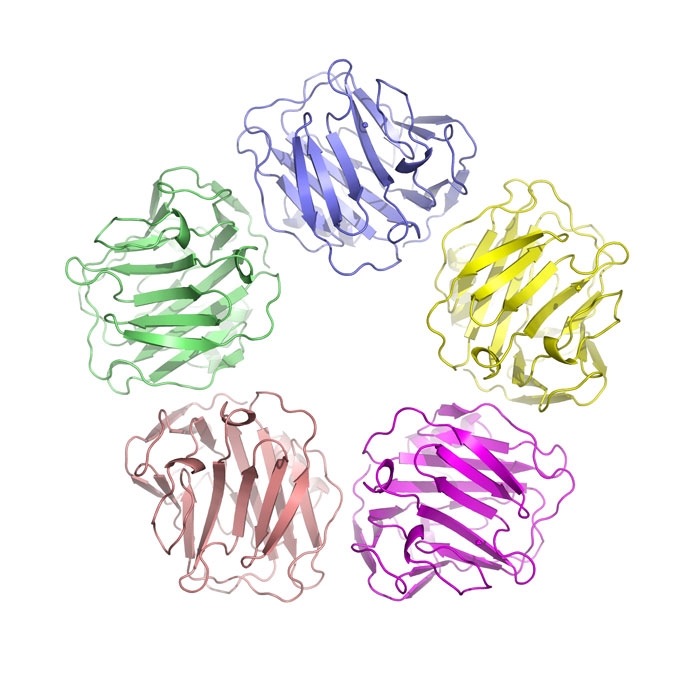C-Reactive Protein / Single Project
Media Details
| Media ID: | SYM0016 |
|---|---|
| Client: | Scientific |
| Created on: | 2004-01-07 |
| Published on: | 2005-01-07 |
| Dimensions: | 2000 x 2000 pixels |
Type: Illustration
Audiences: Scientific, Medical
Keywords: C-reactive protein, heart disease, cholesterol, CRP, New England Journal of Medicine, Brigham and Women's Hospital, cardiovascular disease, health, protein, drugs, image, picture, photograph, graphics, illustration, Bristol-Meyers Squibb, Pfizer
Order or Customize itDescription
Researchers have recently reported that a protein produced by the body during inflammation is a bigger cause of heart disease than cholesterol.
The research published in the New England Journal of Medecine found that inflammation in the body can trigger heart attacks.
The cause of the trouble is a protein known as C-Reactive Protein (CRP).
Structurally, CRP is a pentamer, as shown in the graphical illustration here. In this image of C-reactive protein, each of the monomers is shown in a different color (chain-coloring). CRP is composed of five identical noncovalently associated monomers symmetrically arranged around a central pore (pentraxin family). Two antiparallel β-sheets with a flattened jellyroll topology similar to that of lectins (such as concanavalin) make up the monomers.
C-reactive protein (CRP) is a phylogenetically conserved plasma protein, meaning that it is present in the blood. Involved in the systemic response to inflammation, its concentration increase during this event - a characteristic that serves as a clinical diagnostic marker for inflammation. C-reactive protein is believed to be a part of the innate immune response.
C-reactive protein (CRP) is also recognizes molecular patterns found on cells undergoing apoptosis (cell death) as well as found on the surface of pathogens.
*note:This image can be highly customized at little additional expense. Furthermore, rotation animations are available as well. Illustrations, in 3D and 2D-illustrative styles are also available. Electron density graphics are available, but would require at least a 48 hour turnaround.
References
None provided













